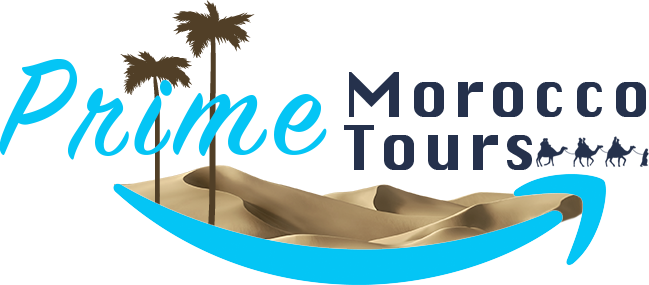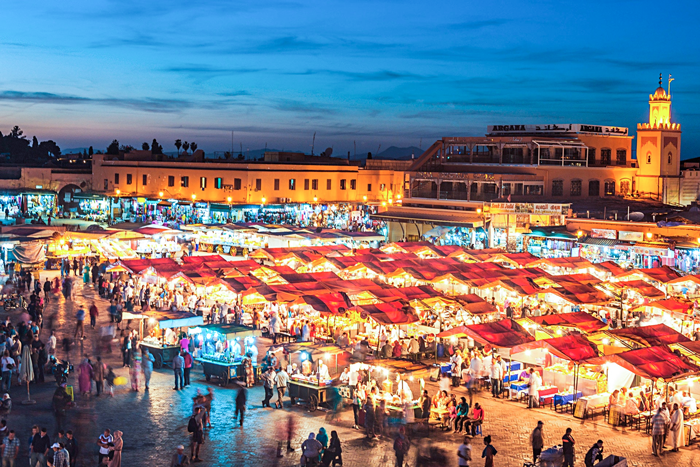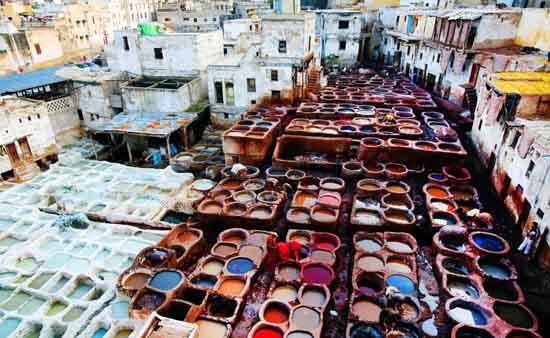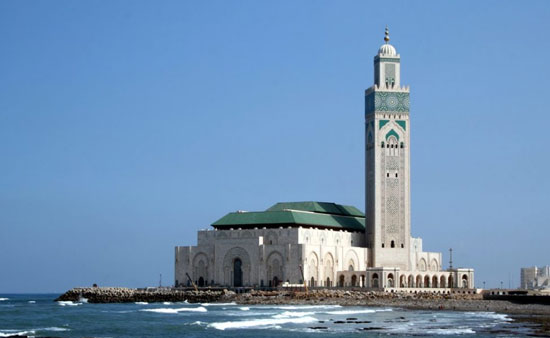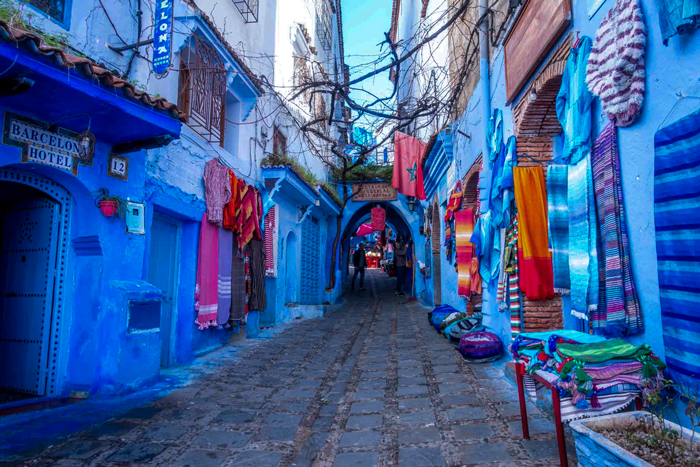The Ultimate Morocco Travel Guide for American Travelers
Planning a trip to Morocco from the United States can feel both exciting and overwhelming. From the bustling markets of Marrakech to the endless dunes of the Sahara, Morocco offers a travel experience unlike any other. Whether you’re seeking vibrant culture, stunning landscapes, or unforgettable culinary experiences, this Morocco Travel Guide for American Travelers is your go-to resource for planning a safe, enjoyable, and authentic journey.
In this guide, you’ll discover the best destinations, practical travel tips, cultural insights, and insider advice tailored specifically for U.S. travelers. By the end, you’ll feel confident and inspired to embark on your Moroccan adventure.
Why Morocco is Perfect for American Travelers
Morocco is quickly becoming one of the most popular destinations for American tourists, and it’s easy to see why. Here’s what makes it a great choice for travelers from the U.S.:
1. Rich Culture and History
From ancient medinas to UNESCO World Heritage sites, Morocco’s history is fascinating and accessible. American travelers can explore centuries-old architecture, vibrant markets, and artisan workshops that provide an authentic glimpse into Moroccan life.
2. Unique Experiences You Can’t Find Anywhere Else
-
Ride camels through the Sahara Desert at sunset.
-
Sip mint tea in a traditional riad.
-
Wander the colorful streets of Chefchaouen, the “Blue City.”
-
Sample street food in bustling souks or dine in luxury desert camps.
3. Ease of Travel for U.S. Citizens
Americans enjoy a visa-free stay in Morocco for up to 90 days, making travel simple. Direct flights are available from major U.S. cities, and local tours are well-organized with English-speaking guides.
4. Safety and Comfort
Morocco is considered a safe destination for American travelers who follow common travel precautions. From comfortable accommodations to guided tours, you can explore both cities and deserts with peace of mind.
Best Time to Visit Morocco
Timing your trip is crucial to getting the most out of your Moroccan adventure. Morocco’s climate varies by region, so understanding when to go will help you enjoy your travels comfortably.
1. Spring (March to May)
Spring is one of the best times to visit Morocco. The weather is warm but not too hot, making it perfect for exploring cities like Marrakech and Fes or trekking in the Atlas Mountains. The landscapes are lush, and flowers bloom across the countryside.
2. Fall (September to November)
Fall offers similarly pleasant temperatures and fewer crowds compared to summer. It’s an ideal time for desert excursions, as the Sahara is cooler and more comfortable for camel treks and overnight stays in luxury camps.
3. Summer (June to August)
Summers can be extremely hot, especially in the inland cities and desert regions. Coastal cities like Essaouira or Agadir offer cooler temperatures and a refreshing escape from the heat.
4. Winter (December to February)
Winter is mild in coastal and southern regions but can be cold in the Atlas Mountains, where snow is possible. This season is perfect for Americans looking to combine city tours with skiing or mountain adventures.
Tip for American Travelers: Morocco’s climate varies widely, so packing layers and planning your route carefully will make your trip more comfortable.
Top Destinations in Morocco
Morocco is full of destinations that appeal to a wide variety of travelers. Here’s a detailed look at must-visit locations for American visitors:
Marrakech – The Red City
Marrakech is a city of contrasts where history meets modernity. Its bustling medina is a Patrimonio de la humanidad, filled with narrow alleys, vibrant souks, and hidden riads. American travelers will love exploring the spice markets, artisan shops, and traditional Moroccan carpets.
Must-See Attractions:
-
Jemaa el-Fnaa Square: The heart of Marrakech, alive with snake charmers, street performers, and food stalls.
-
Majorelle Garden & Yves Saint Laurent Museum: A peaceful escape showcasing exotic plants and Moroccan art.
-
Bahia Palace & Saadian Tombs: Architectural masterpieces reflecting Morocco’s rich history.
Travel Tip: Stay in a riad within the medina for an authentic experience, and hire a local guide for a walking tour to avoid getting lost in the labyrinthine streets.
Fes – Morocco’s Spiritual and Cultural Heart
Fes is known as the country’s cultural capital, with one of the oldest medieval cities in the world. Its Fes el-Bali medina is a treasure trove of history, filled with centuries-old mosques, madrasas, and artisan workshops.
Must-See Attractions:
-
Tanneries of Fes: Observe traditional leather-making methods that have been passed down for generations.
-
Bou Inania Madrasa: Stunning Islamic architecture with intricate tilework.
-
Al Quaraouiyine University: Considered the world’s oldest continuously operating university.
Travel Tip: For American travelers, consider hiring a local guide to navigate the medina’s winding streets safely, and don’t miss trying traditional Moroccan dishes at a local eatery.
Casablanca & Rabat – Modern Cities with a Touch of History
For travelers who enjoy modern urban experiences alongside historical landmarks, Casablanca and Rabat offer the perfect balance.
Casablanca:
-
Hassan II Mosque: One of the largest mosques in the world, with stunning architecture and oceanfront views.
-
Corniche: A lively seaside promenade with cafes, restaurants, and nightlife.
Rabat:
-
Kasbah of the Udayas: A charming fortress with gardens overlooking the Atlantic.
-
Royal Palace & Mausoleum of Mohammed V: Insight into Morocco’s royal history and architecture.
Travel Tip: Casablanca is great for a short stopover or city tour, while Rabat’s relaxed atmosphere is ideal for a day trip or a quiet overnight stay.
Sahara Desert & Merzouga – An Unforgettable Desert Adventure
Experiencing the Sahara is a highlight for many American travelers visiting Morocco. Merzouga is the gateway to the vast Erg Chebbi dunes, where golden sands stretch as far as the eye can see.
Experiences:
-
Camel Trekking: Ride through the dunes at sunrise or sunset for magical views.
-
Overnight Desert Camps: Sleep under the stars in a luxury tent, complete with traditional Moroccan meals and Berber music.
-
Quad Biking & Sandboarding: For adventure enthusiasts seeking more active experiences.
Travel Tip: Bring a scarf or turban to protect against sand and sun, and plan your trip with a reputable tour operator who provides safe desert excursions.
Coastal Cities: Essaouira & Chefchaouen – Scenic Escapes
Morocco’s coastal towns offer a contrast to the bustling cities and deserts, perfect for travelers seeking relaxation and picturesque views.
Essaouira:
-
A historic port town with a relaxed vibe and colonial architecture.
-
Explore the old medina, a Patrimonio de la humanidad, and stroll along the seaside ramparts.
-
Known for fresh seafood, try grilled sardines at a local cafe.
-
Popular for windsurfing and kite surfing along the Atlantic coast.
Chefchaouen:
-
Famous as the “Blue City” for its striking blue-painted streets and alleys.
-
A photographer’s paradise with charming plazas, artisan shops, and scenic mountain views.
-
Sample local goat cheese, hand-woven textiles, and traditional Moroccan pastries.
Travel Tip: Both cities are ideal for American travelers seeking a slower pace, with opportunities to relax, take photos, and immerse themselves in local culture.
Ready to Experience Morocco Like a True Insider?
Don’t just visit Morocco, feel it. From the golden dunes of the Sahara and the iconic blue streets of Chefchaouen to the buzzing souks of Marrakech, your journey deserves expert planning.
Let our licensed Moroccan travel specialists craft a personalized itinerary that aligns with American travel preferences, safety expectations, and comfort standards.
Moroccan Culture & Etiquette
Understanding Moroccan customs will help American travelers feel more comfortable and show respect for local traditions. Morocco is a country with deep-rooted cultural values, and small gestures can make a big difference in interactions.
1. Greetings and Politeness
-
Handshakes are common, but in more traditional areas, men and women may not shake hands across genders.
-
A simple “Salam Alaikum” (peace be upon you) is a polite greeting.
-
Showing respect to elders is important, and smiling goes a long way.
2. Dress Code
-
Morocco is generally conservative. American travelers should dress modestly, especially in rural areas or religious sites.
-
Women: Cover shoulders and knees; lightweight scarves can be useful for covering your head in mosques.
-
Men: Avoid sleeveless shirts in conservative areas.
3. Photography Etiquette
-
Always ask before photographing people, particularly in rural areas or markets.
-
Some religious sites may restrict photography, so check signs or ask a guide.
4. Social Customs
-
Public displays of affection are frowned upon outside tourist areas.
-
When invited to someone’s home, it’s polite to accept tea or a small snack.
-
Haggling is expected in markets, but do so respectfully and with a smile.
Travel Tip for American Travelers: Familiarizing yourself with these customs not only helps you avoid misunderstandings but also enriches your experience, allowing for more authentic connections with locals.
Food & Drink Guide for American Travelers
Moroccan cuisine is rich, flavorful, and diverse. American visitors will find both familiar and new tastes, from hearty tagines to sweet pastries.
1. Must-Try Moroccan Dishes
-
Tagine: Slow-cooked stew served in a conical clay pot, often with meat, vegetables, or fruit.
-
Couscous: Steamed semolina grains, usually served with vegetables, meat, or chicken.
-
Pastilla: A savory-sweet pastry, often filled with pigeon or chicken and almonds.
-
Harira: Traditional Moroccan soup, especially popular during Ramadan.
2. Street Food and Snacks
-
Sfenj: Moroccan doughnuts, perfect for breakfast or a midday snack.
-
Grilled Meats and Kebabs: Widely available in markets.
-
Mint Tea: Known as “Moroccan whisky,” this sweet green tea is a daily staple.
3. Drinking Water and Safety Tips
-
Stick to bottled water to avoid stomach issues.
-
Wash fruits and vegetables carefully if eating raw.
-
American travelers with dietary restrictions should inform restaurants in advance; most places are accommodating.
4. Dining Tips
-
Meals are often social; sharing is common.
-
Tipping (10–15%) is customary in restaurants.
-
Trying local desserts and street snacks enhances the cultural experience.
Travel Tip: For American travelers, exploring food markets with a guide can provide a safe and immersive way to taste authentic Moroccan cuisine while learning about local ingredients and cooking traditions.
Safety & Health Tips
Morocco is generally safe for American travelers, but following some precautions will ensure a smooth and enjoyable trip.
1. General Safety
-
Major tourist areas such as Marrakech, Fes, and Essaouira are generally safe, but petty theft can occur in crowded markets.
-
Keep your belongings secure, especially in busy medinas and on public transportation.
-
Avoid walking alone at night in poorly lit areas.
2. Travel Advisories
-
Check the U.S. Department of State website for the latest travel advisories before your trip.
-
Register your travel plans with the U.S. Smart Traveler Enrollment Program (STEP) for updates on safety and emergencies.
3. Health Precautions
-
Vaccinations: Routine vaccines like Hepatitis A and Typhoid are recommended.
-
Water: Stick to bottled water and avoid ice from unknown sources.
-
Food Safety: Eat at reputable restaurants or food stalls recommended by locals or guides.
4. Emergency Contacts
-
U.S. Embassy in Rabat: +212-537-63-69-00
-
Local Police: 19
-
Medical Assistance: Major cities have hospitals with English-speaking staff.
Travel Tip: Carry a small first-aid kit, hand sanitizer, and any prescription medications you need.
Practical Travel Tips for American Visitors
Planning ahead can make your Moroccan adventure much more comfortable and enjoyable.
Currency and Money
-
The Moroccan Dirham (MAD) is the local currency.
-
ATMs are widely available in cities, but carry cash for small towns or markets.
-
Credit cards are accepted in hotels and larger restaurants but not everywhere.
Language
-
Arabic and French are the official languages, but English is commonly spoken in tourist areas.
-
Learn basic phrases like “hello” (Salam), “thank you” (Shukran), and “please” (Afak) to connect with locals.
Transportation
-
Taxis: Petit taxis are good for short trips; negotiate the fare in advance.
-
Trains: Comfortable and reliable for traveling between major cities.
-
Buses & Grand Taxis: Convenient for longer trips or rural areas.
-
Domestic Flights: Useful for covering large distances quickly.
Connectivity
-
SIM cards are inexpensive and widely available; providers include Maroc Telecom, Orange, and Inwi.
-
Free Wi-Fi is often available in hotels, cafes, and restaurants in cities.
Travel Apps and Resources
-
Google Maps or Maps.me for navigation.
-
TripAdvisor for restaurant and tour recommendations.
-
XE Currency app for real-time currency conversion.
Travel Tip: Plan your itinerary with realistic travel times between destinations; Moroccan roads can be slower than expected due to terrain and traffic.
Sample Itineraries for American Travelers
Planning your route can be overwhelming, especially if it’s your first time in Morocco. These sample itineraries are designed to help American travelers make the most of their vacation time while discovering essential highlights.
5-Day Highlights: Marrakech, Desert Adventure & Atlas Mountains
Ideal for: Travelers on a tight schedule who want culture + desert.
Día 1: Arrive in Marrakech, explore the medina and Jemaa el-Fnaa square
Día 2: Visit Bahia Palace, Majorelle Garden + evening hammam treatment
Día 3: Travel to the Sahara through the Atlas Mountains, stop at Ait Ben Haddou
Día 4: Sunrise camel trek + return via Ouarzazate (Hollywood of Morocco)
Día 5: Final shopping in Marrakech before departure
Perfect balance between culture, desert adventure, and iconic landmarks.
7-Day Cultural Discovery: Fes, Sahara Desert & Marrakech
Ideal for: Culture lovers and first-time Morocco visitors.
Day 1–2: Explore Fes: tanneries, medina tour, artisan workshops
Día 3: Drive to Merzouga via the Ziz Valley
Día 4: Camel trek + overnight luxury camp
Día 5: Travel to Marrakech via Ouarzazate studios
Día 6: Guided walking tour, rooftop dining, and souk shopping
Día 7: Relaxing spa morning + departure
Balanced pace with immersive cultural stops.
10-Day Complete Experience: Cities, Coast & Desert
Ideal for: Travelers who want it all.
Stops include Casablanca, Rabat, Chefchaouen, Fes, Sahara Desert, Marrakech, and Essaouira.
This itinerary is great for Americans taking advantage of PTO or honeymoon trips.
Travel Tip for Americans: Morocco is larger than many visitors expect, so allow realistic travel time, especially on mountain roads.
American-Friendly Travel Resources
Traveling in a foreign country is easier when you know where to turn for help, information, and support. Below are helpful resources tailored specifically for U.S. travelers.
U.S. Embassy & Consulate Contacts
-
U.S. Embassy in Rabat
Offers emergency assistance, passport services, and alerts. -
U.S. Consulate in Casablanca
Useful for travelers staying in the business hub or flying internationally.
Save these numbers in your phone before arrival.
Ready to Experience Morocco Like a True Insider?
Don’t just visit Morocco, feel it. From the golden dunes of the Sahara and the iconic blue streets of Chefchaouen to the buzzing souks of Marrakech, your journey deserves expert planning.
Let our licensed Moroccan travel specialists craft a personalized itinerary that aligns with American travel preferences, safety expectations, and comfort standards.
FAQs: Morocco Travel Guide for American Travelers
Do Americans need a visa to visit Morocco?
No. U.S. passport holders can stay up to 90 days visa-free.
Is Morocco safe for solo travelers?
Yes. Major tourist areas are safe, follow normal big-city precautions, avoid unlit alleys at night, and use registered guides.
Can I drink alcohol in Morocco?
Alcohol is available in licensed hotels, lounges, and some restaurants, but not in public streets or local markets.
Is Morocco safe for solo female travelers?
Yes, with awareness. Dress modestly, avoid isolated areas at night, and consider guided tours for comfort.
What is the best way to get around Morocco?
Trains are ideal between major cities. For long distances or rural areas:
-
Private drivers
-
Group tours
-
Grand taxis
What is Moroccan internet like?
Fast and affordable. Most travelers buy a $10–$15 SIM card for strong mobile data.
Can I use U.S. dollars in Morocco?
No. You’ll need Moroccan Dirhams (MAD). Many shops accept card, but markets are cash-only.
How long should I stay in Morocco?
For a complete experience:
-
5 days: Marrakech + Sahara taste
-
7–10 days: Cities, desert, mountains, coast
What should I pack?
-
Lightweight layers
-
Comfortable shoes (medina floors are uneven)
-
Scarf for religious sites
-
Power adapter (Type C/E plugs)
10. Is English widely spoken?
English is common in tourism, but French and Arabic are daily languages; basic greetings are appreciated.
Conclusion
Morocco offers unforgettable experiences for every type of American traveler, from the chaotic charm of Marrakech to the peaceful silence of the Sahara dunes, and from ancient medinas to modern coastal cafés.
